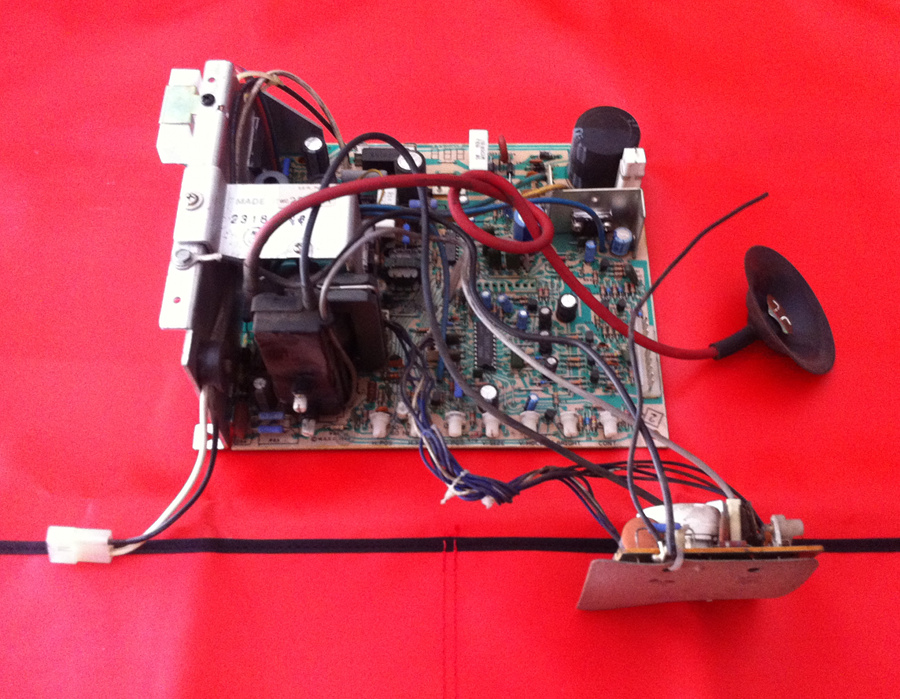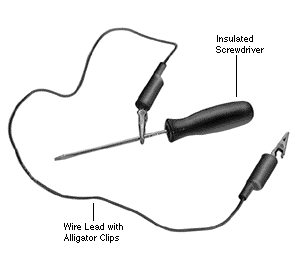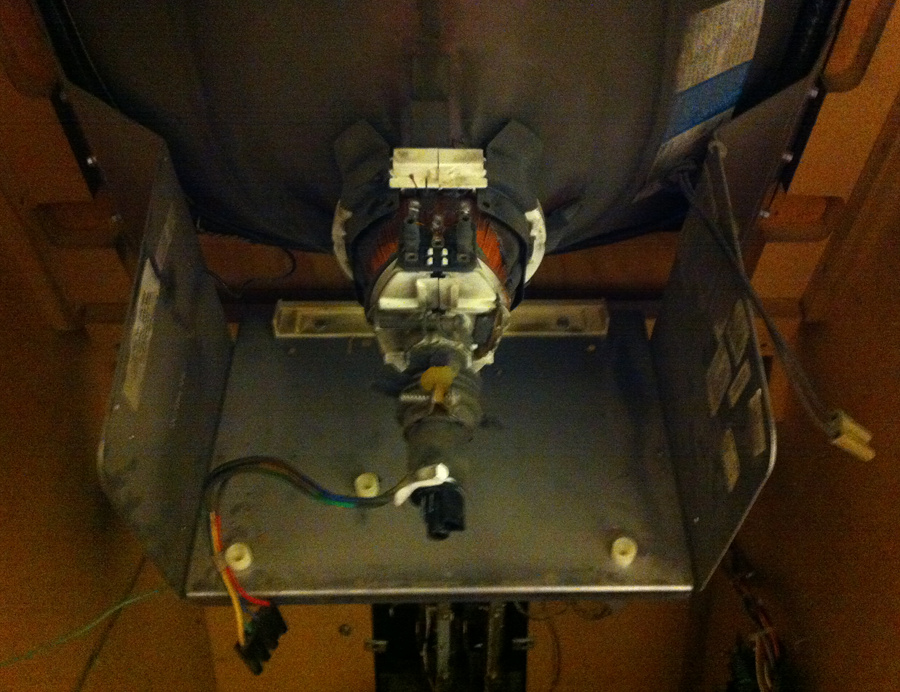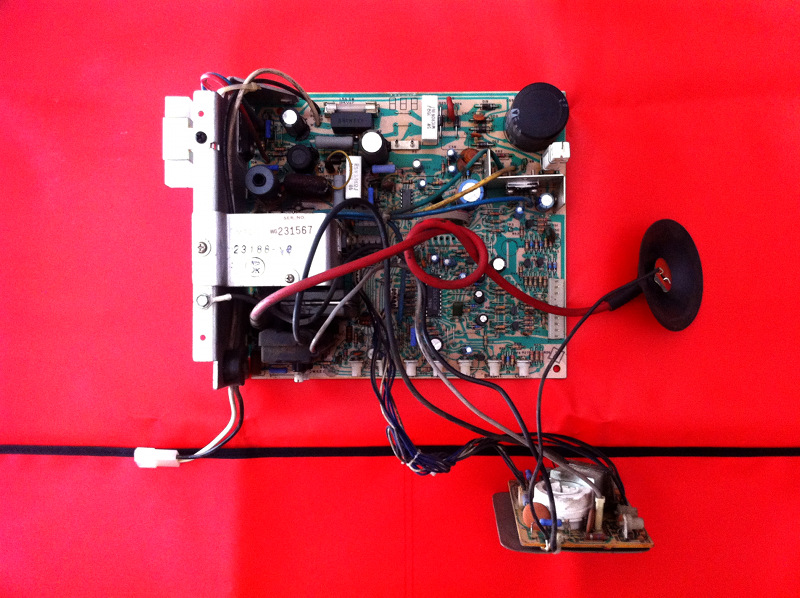After a lot of reading up on safety precautions and watching a lot of YouTube videos on CRT monitor discharging, I took the plunge.
First, I made a discharge tool. I took a flathead screwdriver and soldered an insulated wire to its shaft. I took the other end of the wire and attached an alligator clip to it. I soldered this end as well. I wrapped both soldered connections in electrical tape. I neglected to take a photo of the thing, but here’s a diagram of what it might look like if you used alligator clips on both ends of the wire:
I delayed discharging the monitor for as long as I could just because I was chicken. Finally, in the middle of the afternoon, I figured I should do it. I clipped the alligator clip to the frame, put my free hand in my pocket, and then slowly inserted the screwdriver tip under the anode cup. I have to admit it was frightening.
I slowly inserted it closer to the leads of the anode and next thing you know, I can feel it hitting the leads. And yet, no pop. That was it. I discharged the monitor uneventfully.
I was a bit underwhelmed and also a little scared that maybe I did it wrong, so I tried again. Still, no pop. I decided to go for it and pry the anode out using the screwdriver. After a few seconds, I got it off. Nothing to it!
I made contact with the hole at the top of the tube to verify there was no more charge. I found none at all, so that was it. The last time I turned on the monitor was a week earlier, so I suspect it discharged itself in that time. I’ve heard that the Wells Gardner K7000s don’t really hold a charge for very long, so that’s likely part of it. Anyway, it was overall much easier than I thought. As this page says,
It’s a little frightening the first couple of times, but the thrill wears off.
In the end, here’s what the cabinet looks like without the monitor chassis:
Here’s what the chassis looks like after removal:
A better view of it:
 The next step is to inspect the board, fix bad solder joints, replace the flyback, and replace the capacitors.
The next step is to inspect the board, fix bad solder joints, replace the flyback, and replace the capacitors.


